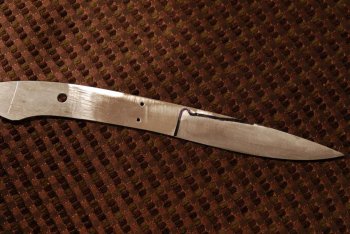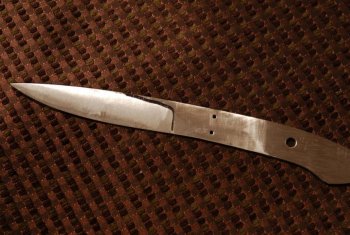I finally got my 2x72 grinder up and running and am working or the learning curve. I ground a couple out of mild steel for practice then jumped in, completely ruined the third attempt, got into trouble and the more I tied to fix it the worse it got, finally got the edge too thin and overheated the tip. I saved the blank and when I get better I may try to "re-design" it.
My question is about the plunge and where it meets the bevel. The left side of my blanks make a nice curve, the right goes above the bevel line and I can't figure out what I am doing to cause it. I will make several passes and everything looks good the next pass and its there. If its early and my grind line is still low I have managed to fix it but in the blank I trashed I got into the spine.
I marked the lines with a marker since I couldn't make it show up well in the pic's.
Thanks in advance for any helpfull suggestions you can offer.
My question is about the plunge and where it meets the bevel. The left side of my blanks make a nice curve, the right goes above the bevel line and I can't figure out what I am doing to cause it. I will make several passes and everything looks good the next pass and its there. If its early and my grind line is still low I have managed to fix it but in the blank I trashed I got into the spine.
I marked the lines with a marker since I couldn't make it show up well in the pic's.
Thanks in advance for any helpfull suggestions you can offer.



